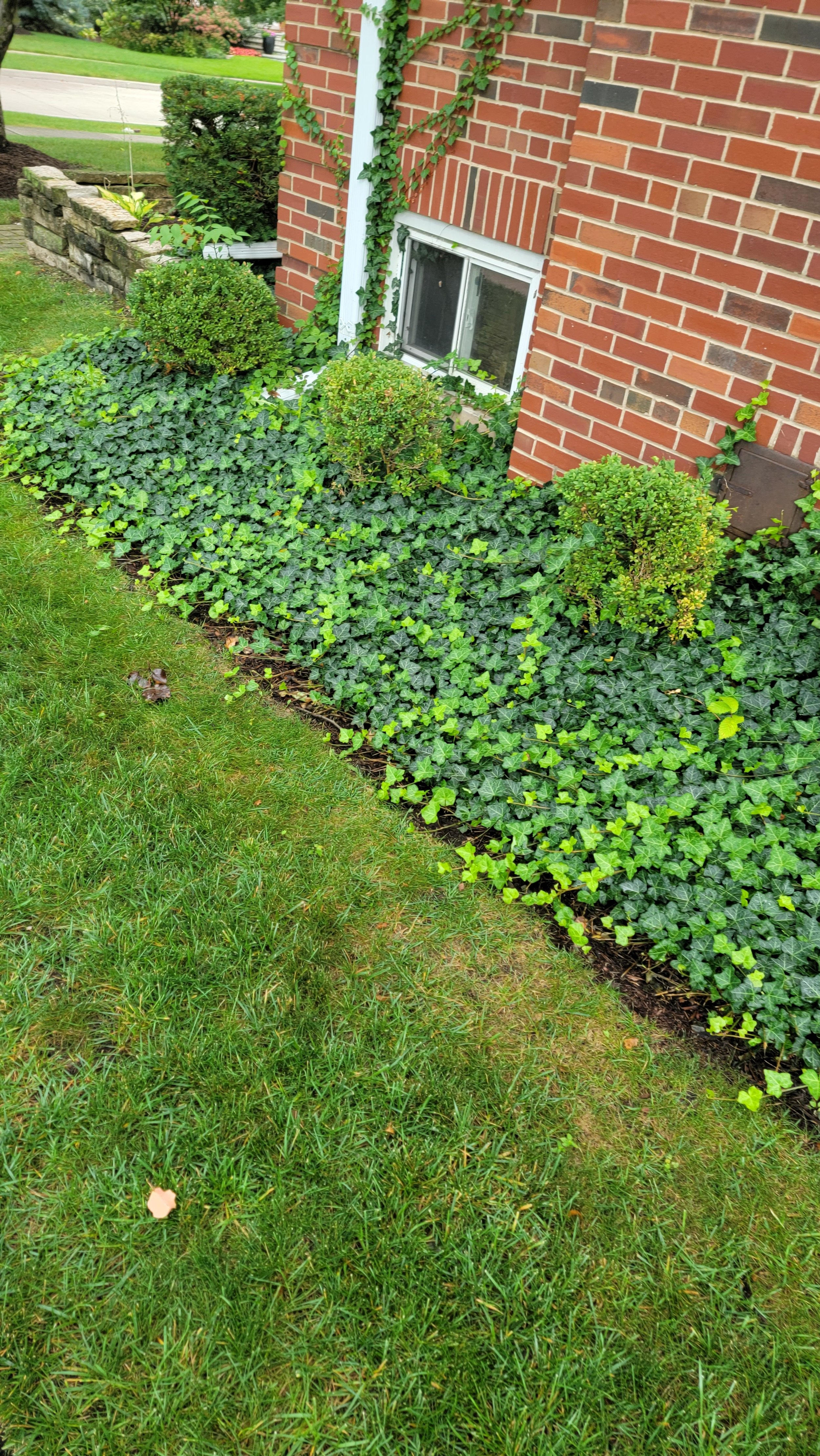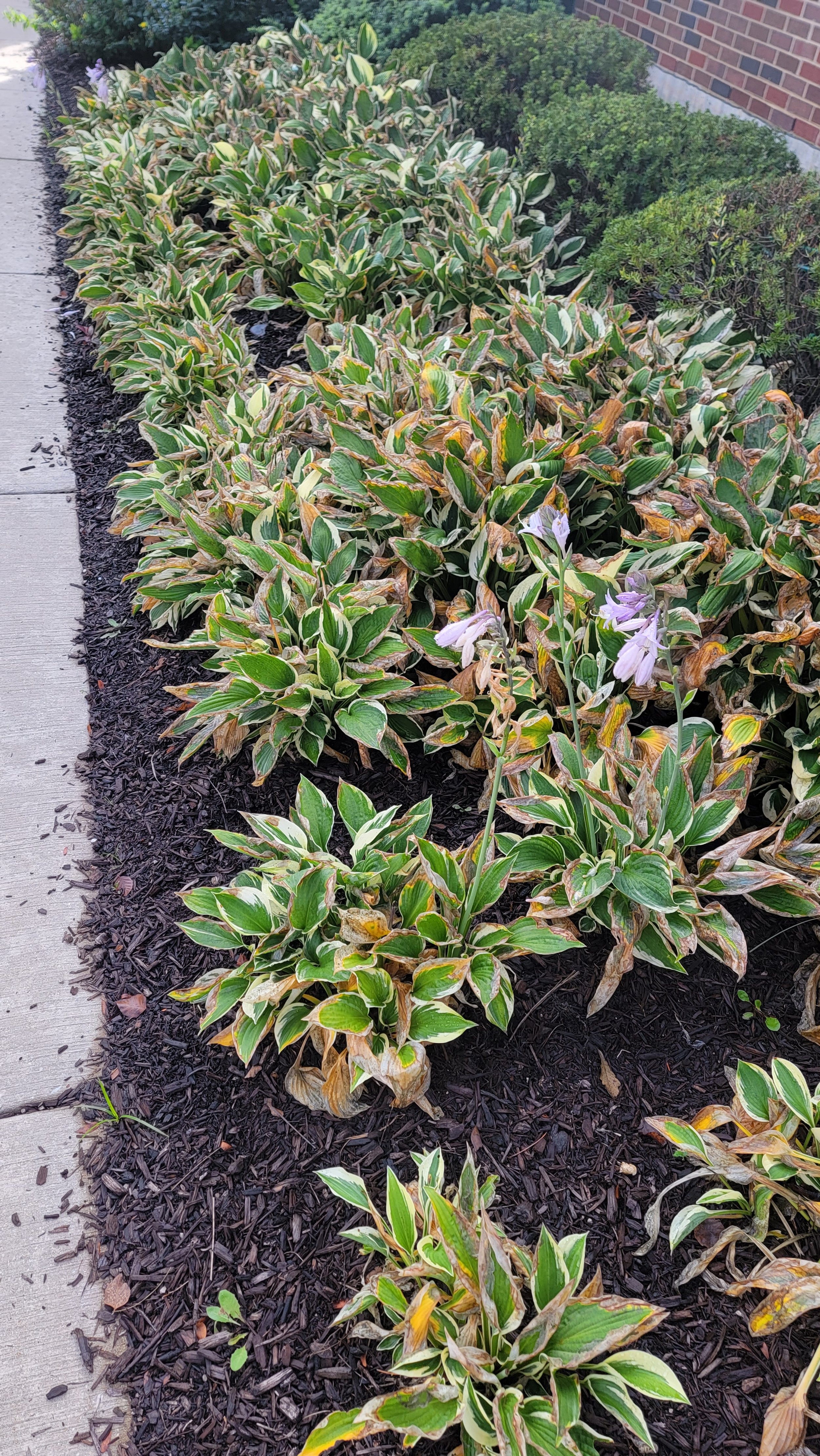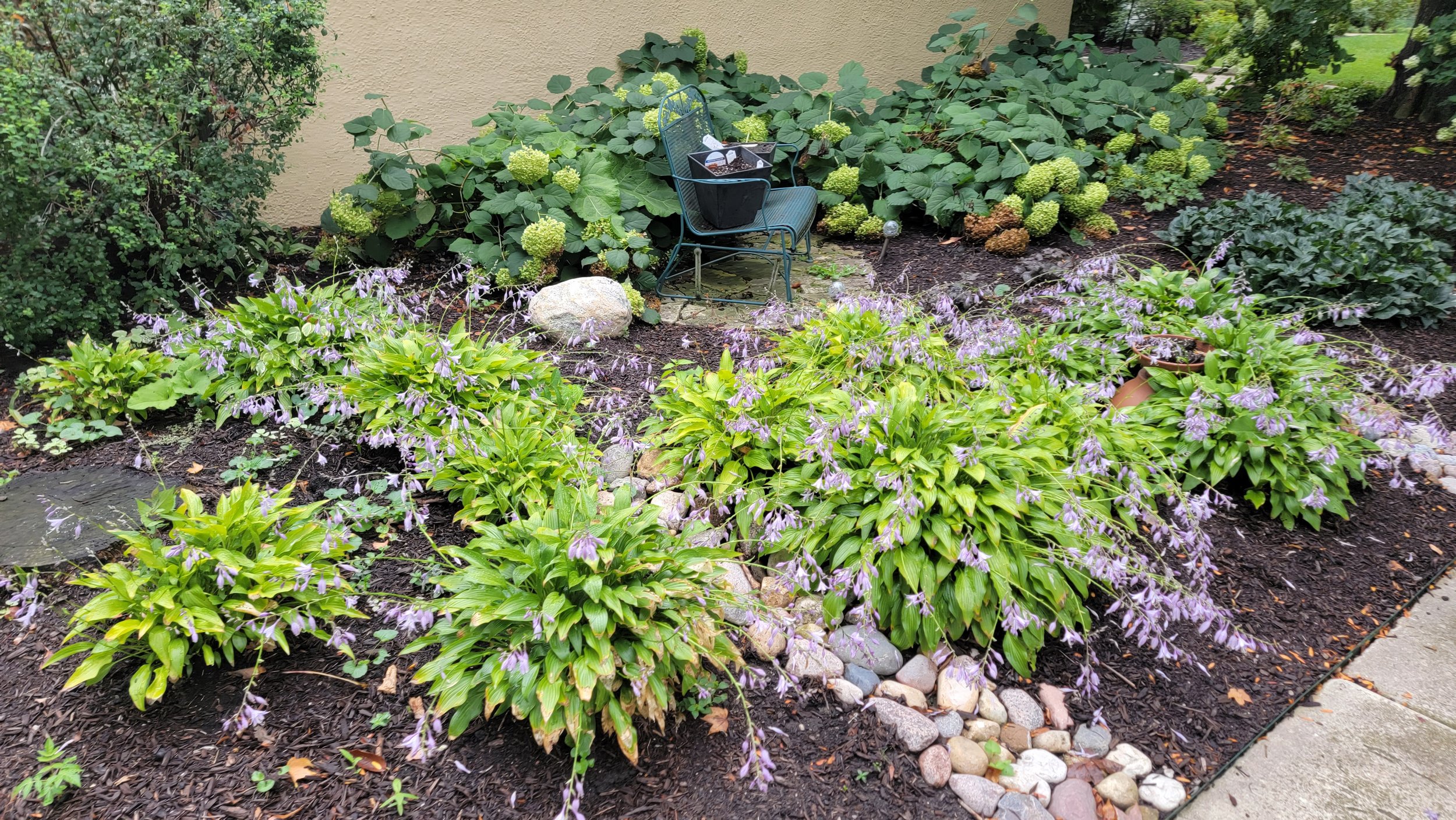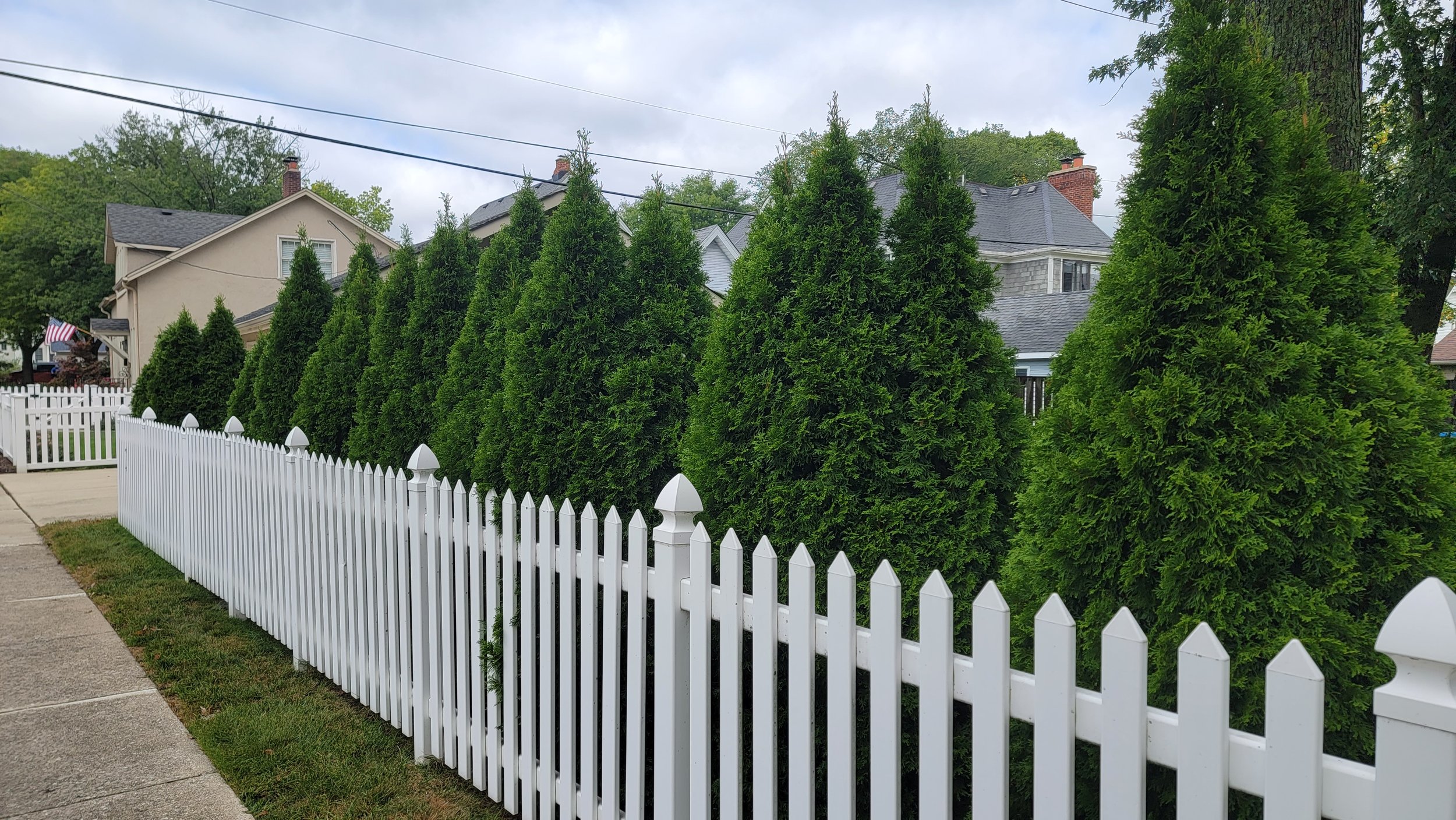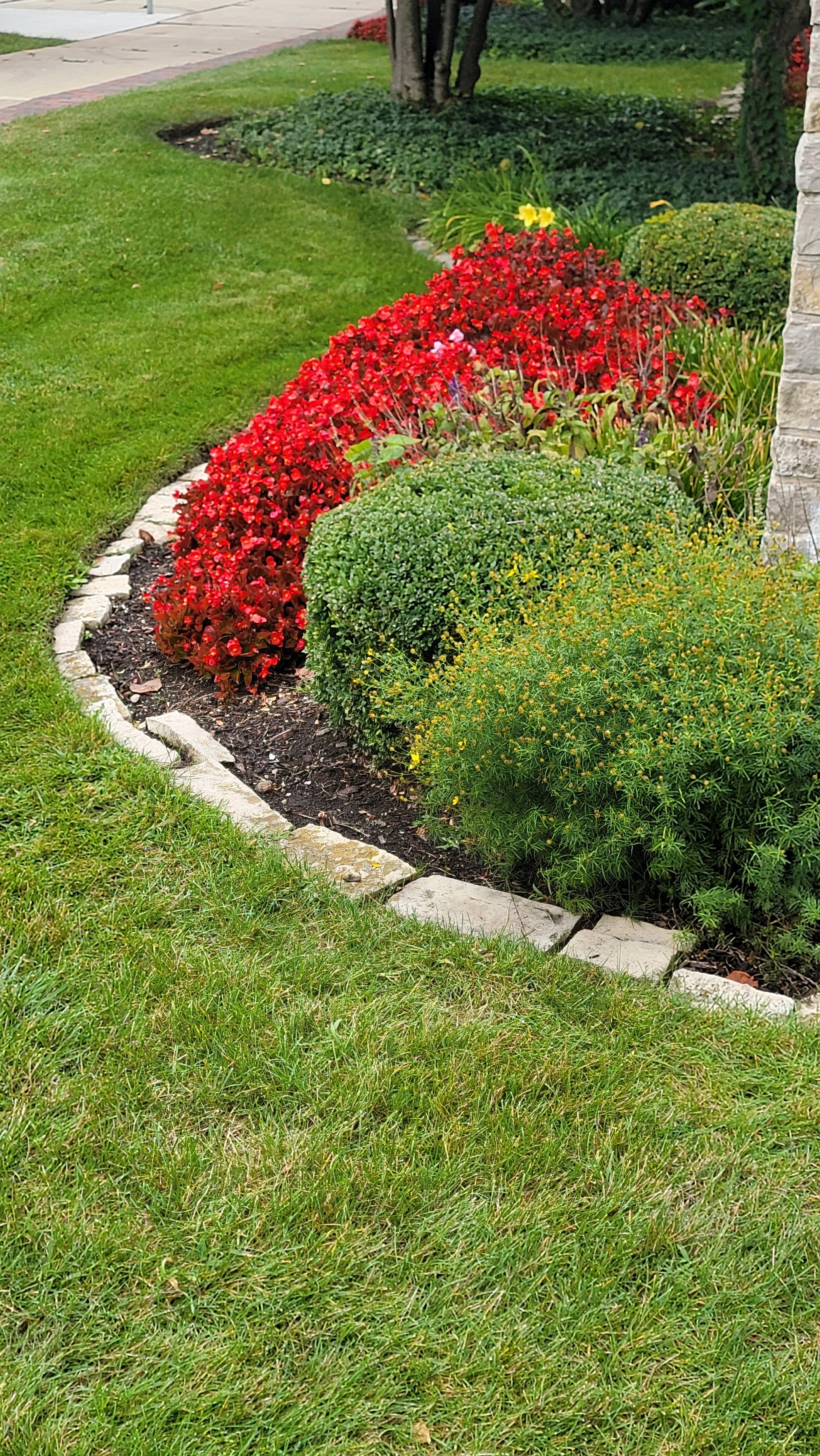Midwest Landscaping Death Cult
I've gained a steady distrust of landscapers. Some of them are my friends, but regardless, I distrust the entire profession. If anything, this is based on the attributes of what the general public wants and what the entire market is geared towards, more than it is based on any individual themselves.
The landscaping industry - like much of the entertainment industry in this country - is its own negative feedback loop where the public wants the unthinking, hideous lowest-common-denominator shit and the industry is forced to respond because that's what sells. So the industry starts to produce even dumber, uglier shit, and the public eats it up, and so it becomes the new standard of what is now “normal” and acceptable. We are left with the unimaginative paint-by-numbers approach to landscaping "design" : blocks and swaths of color with no mixing, far too much (and eerily equal) spacing between plants. We end up with plants looking like products on a shelf at Walmart as opposed to a recreation of nature or or habitat restoration.
What's more,I realize what a regional thing it is,too. There is a specific flavor to midwest landscaping. You would see it in front of a bank in the suburbs, or the banquet hall, or the office park, or the walgreens.
You rarely see this shit in California Native Plant Landscaping - responsible for a large part of the birth of the modern native plant movement , which itself seemed inherently iconoclastic and rebellious by nature. The foundations of modern Midwest American Landscaping have their roots in ideations of English Aristocracy : rounded, monocultural landscape beds of flowers separated by “rivers” of neatly-mowed, uniformly-green (and surely poisoned with chemicals) lawn. Groups of 15 individuals of the same species occur together in blocks, like packs of cough syrup lined up next to each other on the shelves of an aisle in the drug store. In the back there may be a phalanx of taller shrubs and in the foreground there will be an army of 25 indidivuals of the same species of lower-growing annuals, almost perfectly evenly-spaced and neatly oriented, as if in an orchard. It resembles the way plants look in a video game landscape like MINECRAFT, the plants almost resembling soldiers in formation. The landscape breathes unthinking obedience, control, & conformity.
What's more, is that landscapers in the region don't seem to realize how unusual it is. Like I said - you seldom see this stuff in many West Coast Native Plant gardens. This kind of rigid uniformity seems like it's antagonistic to the values of the exact kinds of people who spend time in nature and would want to put natie plants in their yard. Most of them seem to realize that the mindset that creates rigid, uniform, evenly-spaced landscapes that look like that is the same mindset that put nature under assult in the first place.
Why does this matter? Because these landscapes - like the buildings and infrastructure that we surround ourselves with - are what end up composing the surrounding world that we are forced to be around every day. If you live in a landscape that breathes sterility, blandness and ugliness you will emulate unthinking sterility and blandness. If you live in a landscape that exhibits that beautiful and intricate chaos of biology and nature, you too will exhibit creativity, diversity of ideas, intellectual agility and beautiful chaos.
Of all the yards that we encountered in the Chicago Area, Gerry Wilhelm's (author of the Flora of the Chicago Region) was the coolest. He has truly turned his immediate surroundings into a nature preserve. I'm sure his yard would send shivers up the spine of any rigid suburban father who lacks creativity & passion but demands order, but to me it was vibrant and incredible. I could tell it was intentionally managed. I could tell it was the home of somebody who spends time in and appreciates wild places.
Do we want to walk down streets in a visual landscape that emulate the natural world that is vanishing as a result of modern capitalism’s materialistic “race to nowhere” or do we want to walk down streets that emulate the homes of the rich? These things matter. Far from being trivial, inconsequential things that are simply a matter of aesthetic, the plant life that surrounds us and the ways in which we bring it into our lives determines our collective ethos as a society. Let's be conscious of it and choose wisely.

